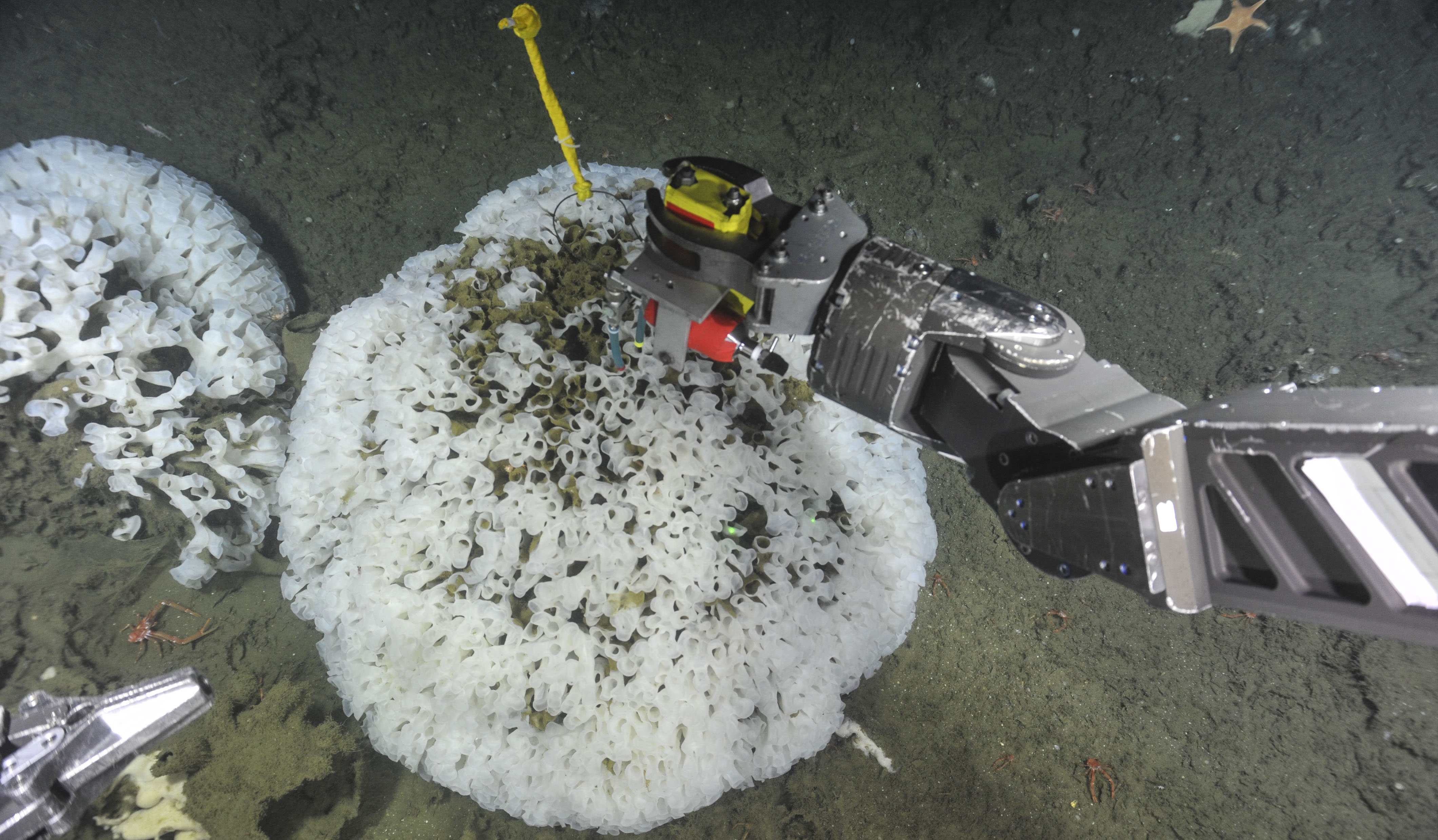Discovering the Reefs
In 1987 a team of scientists from the Geological Survey of Canada set off on a ship to map the seafloor of Hecate Strait, the stormy stretch of water between Haida Gwaii, North Vancouver Island, and the Central Coast of BC. The scientists, led by Kim Conway, were using sonar to map the geology of the seabed. Mapping sonar basically works by sending sound waves from the ship’s equipment to the seabed, and when each sound wave hits an object it is bounced back to the ship and recorded. As these returning signals were received they painted a rough picture of the seafloor, identifying features like rocky seamounts, mudflats, and sandbanks.1
When the scientists looked at the sonar images they collected they found mysterious ghostly mountains on the seafloor. These images were not very detailed but the scientists knew that they had found something important, so they sent remote controlled cameras to explore the reefs. What they found were hundreds of square kilometers of fragile and beautiful glass sponge reefs, teeming with life.1

Image courtesy Kim Conway
Using the sonar images and the seafloor pictures of the reefs the scientists were able to build detailed maps including the different species of sponges, the health of the reefs, and what other species of marine animals live in and around the reefs. It was the first time anyone was able to observe living glass sponge reefs, which had only been known to us previously in the fossil record.1,2,3,4
Studying the sponges
But scientists can only learn so much from observing the sponge reefs with cameras. There are many questions about the biology of glass sponge reefs, how the environment influences them, and how they affect their environment.
To answer these questions a team of scientists at the University of Alberta, led by Dr. Sally Leys, have been using robots or Remotely Operated Vehicles (ROVs) and special instruments, which they have invented and built themselves, to study different aspects of the reefs. In addition to video and still cameras, the ROVs are fitted with robotic arms that can be used to set up equipment, run experiments on the reefs, and collect samples of living tissues.5
This technology has allowed Dr. Leys and her team to answer important questions such as how much food glass sponge reefs need, how quickly they grow, how much carbon and silica they store, how they reproduce, and how sediment in the water affect the sponges feeding. Answering these important questions helps us understand what the reefs need to survive, to ensure they will be here for many more generations to come. 5,6,7,8,9,10,11,12
Video footage courtesy: Sally Leys / DFO / ROPOS
Expedition
In fall of 2015, Dr Sally Leys and her team, together with scientists and managers from Fisheries and Oceans Canada, led an expedition to the Hecate Strait glass sponge reefs. Using a high tech ROV known as ROPOS they set out to survey and map the reefs, and to conduct a series of experiments to study the role of the reefs in the deep-sea ecosystem. The ROPOS ROV is about the size of a Mini car and weighs 3400 kilograms, about the same as a fully-grown killer whale.13
Using live video from the cameras on the front of ROPOS, it takes four skilled operators to drive the remote controlled submersible around the reefs and manipulate the agile robotic arms with care and precision. They used the arms to carefully collect small samples of living glass sponges that they could keep in aquaria to examine and conduct detailed experiments on once they were back on land. They also used the arms to carefully maneuver purpose built instruments to collect data on temperature, oxygen levels, salinity, and measure water currents across the reefs. The instruments have to be waterproof, able to withstand the high pressure at 200m deep, and yet be small enough for the ROV to transport and easy-to-use so that robotic arms could work them without contaminating the samples.13
The team collected samples of the surrounding water and “exhaled” water to measure the quantity of nutrients like nitrogen and carbon that the sponges consume and produce as waste. Calculating how much food, oxygen, and silica the sponges consume and what they produce as waste helps provide a better understanding of the important role they have in the ecosystem, including what role they play in storing carbon and also how much food they provide (through waste) to other species. By measuring the oxygen in the water beside the sponge and oxygen in water exhaled by the sponge Leys and her group are also able to determine how much energy the sponges used to pump the water through themselves. To watch how the different species of glass sponges pump water through their bodies, Leys and her team injected a bright green dye next to the bottom of the sponge and watched for the plume of dye exhaled through the tubes of the sponge (called oscula).10
For more information about the work of Dr. Leys and her team at the University of Alberta click here

